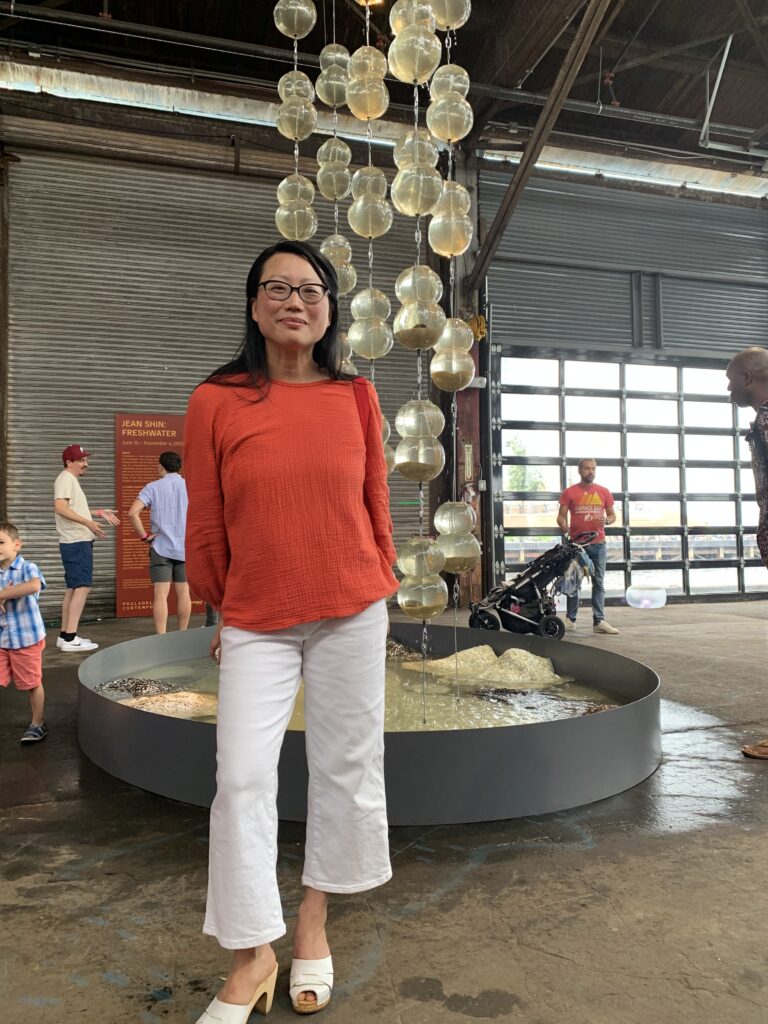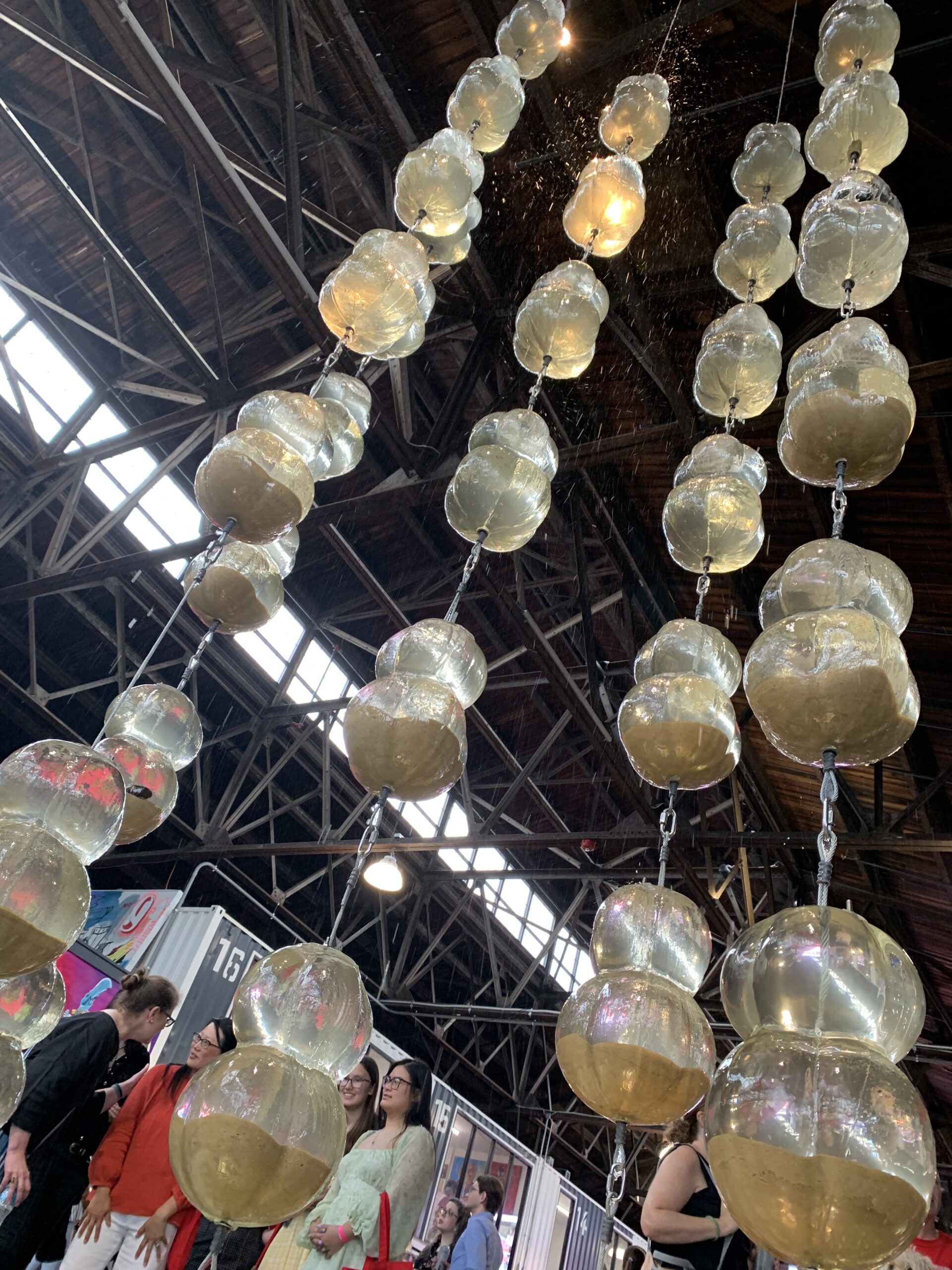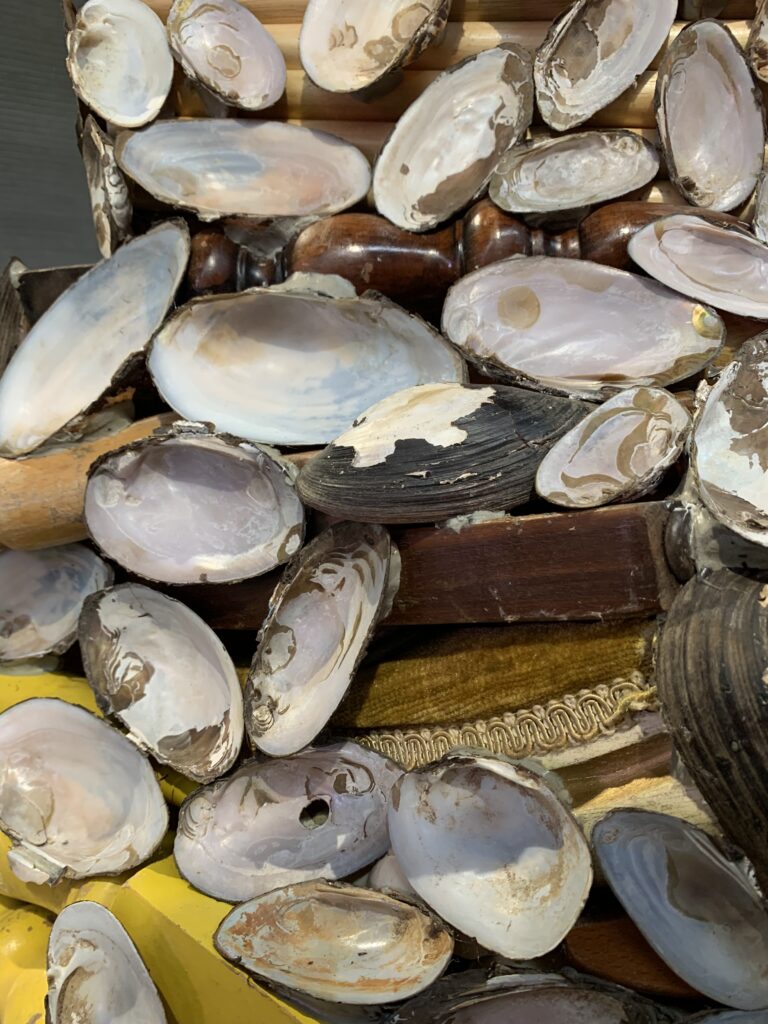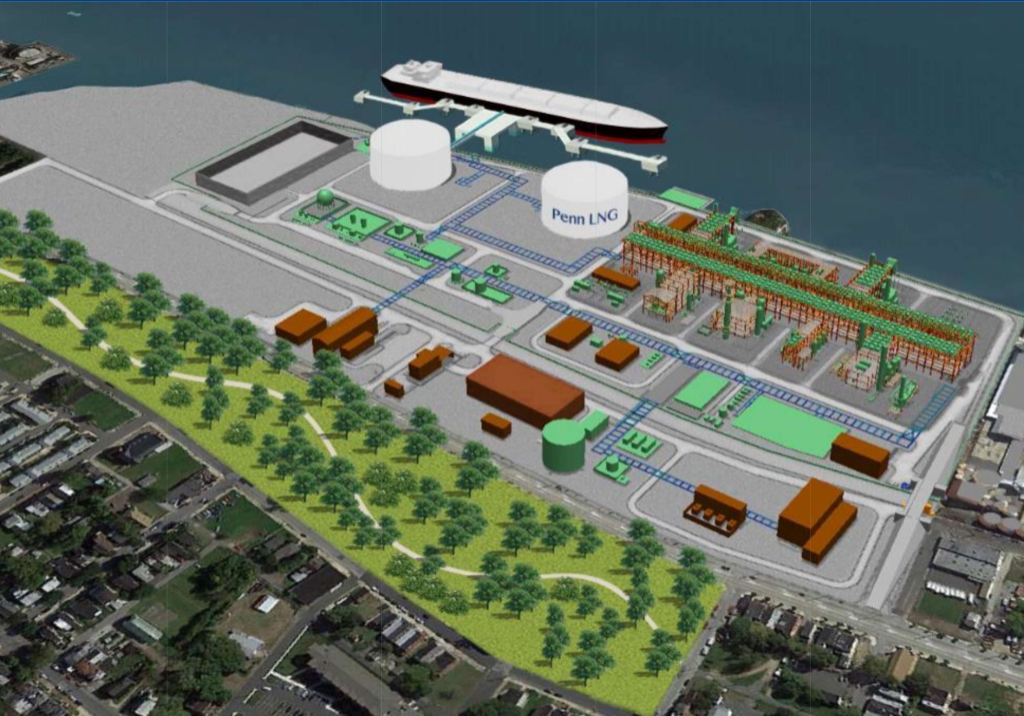
Art exhibit underscores mussels’ vital role in the Delaware River
“Freshwater,” at the Cherry Street Pier in Philadelphia, marries art and science
| August 22, 2022
If you’re strolling through Cherry Street Pier in Philadelphia this summer, you’re bound to run into something you wouldn’t expect: live, freshwater mussels. The animals are peeking out of layers of sand in 30 glass vessels suspended from the ceiling of the pier, filtering water pumped from the Delaware River.
This living fountain is Philadelphia Contemporary’s new installation, Freshwater, by New York-based artist Jean Shin, on display through Nov. 6. You can check out a tank of murky churning water (or just poke your head over the railing to stare down into the river itself), follow the pipe up to the ceiling and watch the water trickle through the glass mussel homes and splash, remarkably clearer, into a pool glittering with buttons made of salvaged mussel shells.

Surrounding the fountain are rock-like sculptures made of man-made materials found on the Delaware shore and studded with shimmering mussel shells showing the progression of industrialization that has so affected them.
It’s as visually alluring as something like the dancing water fountain in the Detroit Metro Airport but with a purpose, with depth… alive.
The installation underscores the importance of these freshwater mussels: 70 percent of their species in the United States are endangered. Of the 67 species native to Pennsylvania, 13 have not been observed by scientists for decades, and another 10 are endangered.
“I felt like, they need an advocate,” Shin said. “They need someone to make them visible — and not visible because they’re pretty or delicious, but they are filtering our water.”

Water pumped in from the Delaware River trickles through suspended mussel beds, displaying the animal’s filtering capacity. Photo by Katherine Rapin
Depending on the size and species, mussels filter up to 20 gallons of water per day, clearing it of bacteria, algae and pollution. They are a food source for many fish, birds and mammals and their shells provide habitat for plants and nesting sites for small fish. These organisms are essential to freshwater ecosystems, like the Delaware River watershed, from which some 15 million people get their drinking water.
Mussels are so vastly depleted across the United States for a number of reasons. Dredging, filling and excess sediment from runoff degrade habitats. Mussels’ larvae need to attach to specific host fish to metamorphosize and dams inhibit those fish from coming into proximity with pregnant mother mussels. Warming water and intensifying storms caused by climate change are also increasingly impacting the remaining populations of these animals.
The installation is part of Philadelphia Contemporary’s multi-year public art series, Water Marks, developed in partnership with the Delaware River Waterfront Corporation in 2020. Early in the pandemic, the Philadelphia Contemporary team was having conversations about bringing environmental issues into its programming in a more intentional and long-term way, said Kerry Bickford, curator of ecological futures at Philadelphia Contemporary.
Organizers started looking at “how singularly important the Delaware River is to the health of the environment and ecology of Philadelphia — the health of Philadelphia humans and other non-human species,” she said.
The river is a source of drinking water and the destination for wastewater. It’s also home to scores of plants and animals that humans are also linked to — like mussels, which eat the algae and bacteria that sewage feeds.
As curator, Bickford says she seeks to provide a platform for artists who are “crafting a vision of, if you related to your ecology differently and shifted your lens on that, how could you shift your life and how could that change ripple out?”
Filtration, water clarity and nutrient reduction
There’s already a lot of activity around mussel restoration in the Delaware River watershed, which Philadelphia Contemporary wanted to highlight with Freshwater.
The Partnership for the Delaware Estuary has been researching freshwater mussels in the watershed for 15 years.
In 2007, the partnership launched the Freshwater Mussel Recovery Program to conserve and restore native mussel populations. The team has conducted mussel surveys; propagated, released and are monitoring several populations; and are currently working on plans for a hatchery at Bartram’s Garden that could produce 500,000 mussels each year to be used for restoration, education and in water quality improvement projects.
Some partnership team members offered their expertise as Freshwater was developed.
The 90 mussels that cycle through the installation are on loan from Fairmount Water Works and the Discovery Center. They were raised at the Philadelphia Water Department’s Freshwater Mussel Hatchery at the Fairmount Waterworks and a grow-out reservoir at Audubon-Mid Atlantic’s Discovery Center, which has been working to propagate and release mussels into area waterways since 2018.
[“They need someone to make them visible — and not visible because they’re pretty or delicious, but they are filtering our water.” – artist Jean Shin]
Environmental scientist Lance Butler runs the department’s freshwater mussel lab at Fairmount Water Works, which is open to the public Wednesday through Saturday. (You can also check out this informative virtual experience.)
Butler was at first skeptical when Bickford and Shin approached him with the idea to suspend mussels from the ceiling in hand-blown glass globes, he said. “I was like, ‘Wow, this is a little bit out there.’” But after talking with them more, he realized that “it’s actually an incredible demonstration of marrying art with science.”
Butler selected two different species, Alewife Floater and Eastern Pond mussel, both native to the Delaware River, to use in the installation. They’re both relatively easy to propagate in the lab, plus the center is working to restore areas of the basin that were populated with these mussels in and around Philadelphia.
“We’re doing a lot of studies in the Delaware to see where you can place these individuals, where they were historically present, and what type of ecosystem services they can provide for us as far as filtration, water clarity and nutrient reduction,” Butler said.
He said he’s excited about how the installation came out. It’s not your typical art piece.
“It’s dynamic. It’s changing all the time,” he said. “The water clarity changes with how the storms come through the basin. The composition of algae changes seasonally and changes the color of the water. The mussels are moving, burying and coming up.”
Butler recommended adding a chiller to keep the water temperature ideal for the animals, as well as changing the mussels out once a week to ensure they don’t become overtaxed.
Hands-on lesson
Every Wednesday afternoon throughout the summer, high school students from the Independence Seaport Museum’s River Ambassador program set up a mussel education station facing the fountain.
One sticky afternoon in mid-July, high school sophomore Derek Serrano stood at a table facing the fountain holding a recently dissected mussel.

“These are the gills,” he said, pointing to a slimy ruffled flap, showing me and a passerby who’d stopped for a 15-minute lesson.
The animal sucks in water through what’s called an incurrent siphon on its posterior side and as it passes over the gills, it catches particles in its mucus, sorting food — algae, phytoplankton, microbes and other organic matter — to be deposited into the mouth and non-food particles to be sent out, skipping the digestive system and deposited in the sediment as “pseudo feces” (fake poop).
Like other bivalves, the animals remove excess nitrogen both by assimilating it into their shells and tissues and burying it in the sediment as waste.
Representing raindrops but also tears
At the opening in mid-June, folks gathered around the fountain, mesmerized by the water dripping through the hourglass-shaped glass vessels, watching as it landed on puddles of mussel shell buttons salvaged from a warehouse in New Jersey.
The iridescent piles allude to the global exploitation and depletion of shellfish from the mother of pearl button industry that had its heyday in the United States in the late 19th century, before the advent of plastic.
In Muscatine, Iowa, where German immigrant John Boepple launched the freshwater mussel button industry in the United States, more than 3,500 tons — seven million pounds — of shell were taken from the Mississippi River in just six years.
“Overharvesting depleted populations of yellow sandshell mussels (Lampsilis teres), and the practice of tossing dead mussels back into the water covered the live ones, interfering with their respiration and feeding and promoting microbial growth that reduced the supply of oxygen in the rivers,” wrote Siara L. Biuk of the Smithsonian Environmental Research Center in an article on the shell button industry.

Many of those shells, as well as imports from the South Pacific, were sent to factories in New Jersey and New York. During research for the work, Shin struck on more than 150 pounds of buttons in a warehouse in Passaic, N.J., which she incorporated into the pool for the fountain.
For her, the button puddles represent raindrops, but also tears. And passing through hourglass-shaped vessels, it hits the viewer with the hard-to-comprehend fact that when it comes to the climate crisis, time is quickly passing by. So much has already been lost, and restoration work is slow.
“The fountain is beautiful but it’s also blanketed in tragedy,” Bickford said. And yet, she added, one of the many things she loves about Shin’s work is “that she can be hopeful without losing sight of the tragedy.”



![DC_Image [Image 4_Assunpink Meets Delaware] meets Delaware The Assunpink Creek on its its way to meet the Delaware River. The creek passes through woods, industrial and commercial areas and spots both sparkling and filled with litter.](https://delawarecurrents.org/wp-content/uploads/bb-plugin/cache/DC_Image-4_Assunpink-meets-Delaware-1024x768-landscape-14f069364113da5e8c145e04c9f2367c-.jpg)




What a magnificent debut! I just spent an amazing hour exploring this article and all of the links to other features this article touches upon, especially the interactive link from thr Fairmount Water Works. I am overjoyed that there are so many efforts to save this severely threatened species. I will be posting this on our Bucks Environmental Action FB page, for sure. Congratulations!